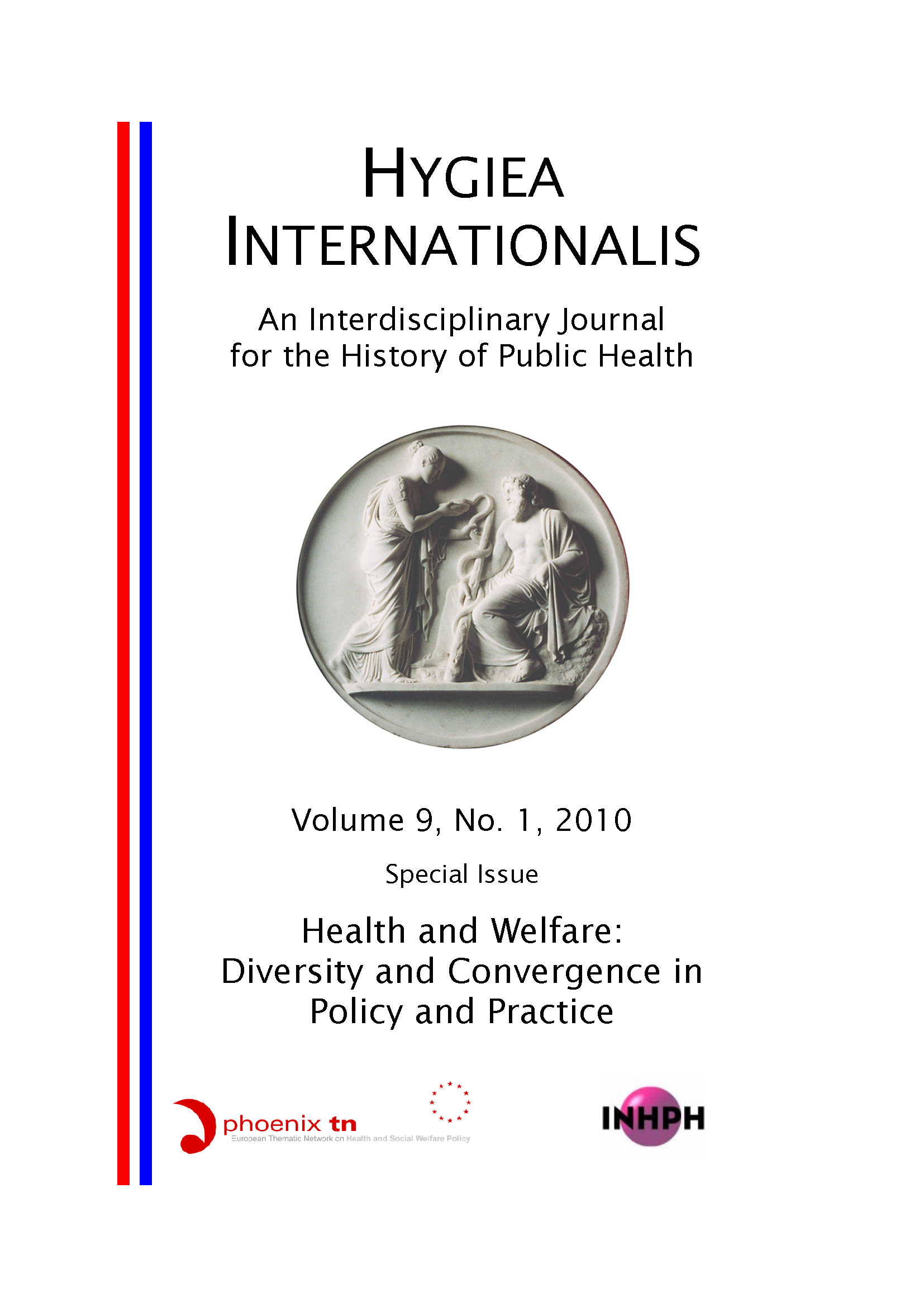Patterns of Hospitality
Aspects of Institutionalisation in 15th & 16th Centuries Nuremberg Healthcare
DOI:
https://doi.org/10.3384/hygiea.1403-8668.109113Abstract
Beginning in the late 14th and accelerating in the mid-15th century, health care relief underwent far-reaching changes in German imperial cities. With regard to the organisational framework of relief they have been analysed and described as processes of institutionalisation, hospitalisation, specialisation, and communalisation. With respect to the healing personnel in charge of applying health care relief schemes initiated by the city councils and hospital administrations, this development has been characterised as professionalisation. Altogether, these transformations could be looked at as a premodern stage of “medicalisation”. But of course, one risks anachronism when applying this term to earlier developments. This paper concentrates on institutional welfare4 provided by hospitals and aims to give a concise overview of the developments in the imperial city of Nuremberg in southern Germany. Information available on each individual institution is relatively poor and mostly extracted from the historical literature. The primary goal of this paper is thus not to enlarge our knowledge of particular Nuremberg relief institutions but to deepen our understanding of their interplay. As an “imperial city”, Nuremberg was directly subordinated to the Emperor and not – like for instance Berlin, Munich or Vienna – to one of the authorities of a territory. As the Emperor’s residence was distant, the authorities of the imperial cities were especially powerful and can be presented as forerunners of modernisation in nearly every respect of public administration. Thus, “imperial city” is a juridical concept characterising the status of a particular city within the Holy Roman Empire; it does not mean “big town” at all –most of them were small in size but conserved the same legal status within the framework of the Empire. Nurem-berg was one of a handful of large imperial cities in the 15th and 16th centuries. With some 36.000 inhabitants around 1500, Nuremberg was the second largest city in the Holy Roman Empire in that period, following Cologne (45.000), but bigger than Lübeck (24.000), Regensburg (22.000), Strasbourg (20.000), and Augsburg (30.000).
Downloads
Published
How to Cite
Issue
Section
License

This work is licensed under a Creative Commons Attribution-NonCommercial 4.0 International License.






